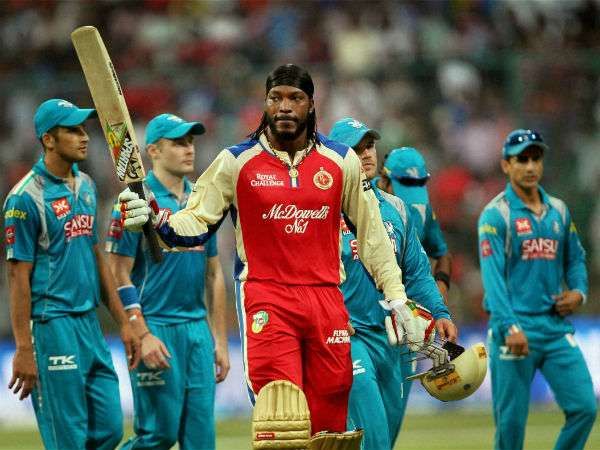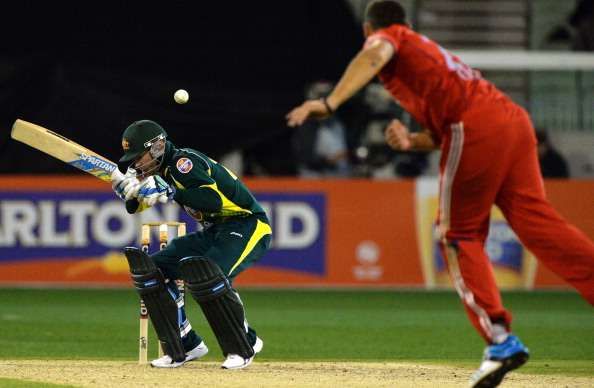
Should bowlers be mere cannon fodder ?

On 1st January 2014, little known Corey Anderson, who was then still making his first moves in international cricket, played a brutal knock that would make the entire cricket world stand up and take notice of him, (especially the bosses of the Indian Premier League who are always on the lookout for the new power hitters of the game).
It was that sort of knock which the bowlers would never want to witness again in their lifetime. His savagery, which put his fellow teammate Jesse Ryder's hurricane knock in shade, fetched him 131 runs off just 47 balls and eclipsed the record of the fastest ODI hundred, which the intrepid Shahid Afridi proudly held for 17 long years.
That this record getting broken by a relatively unknown Corey Anderson and not by Chris Gayle or David Warner as Afridi himself predicted, might have come as a huge surprise to the cricket followers but that the record would be shattered at some time in the near future was never in doubt, thanks to the tremendous increase in scoring rate of the batsmen due to the advent of the T20 cricket.
And it was broken in the very next year by a magician called AB de Villiers when he smashed a 31 ball hundred against the West Indies. With due respect to the hard-hitting Corey Anderson, AB de Villiers and all marauders of their ilk, it is fair to say that such knocks while being thoroughly entertaining at the first glance, also highlight the rapidly widening disparity and lack of contest between the bat and the ball in world cricket.
Many whirlwind knocks were played in the recent years but the fastest centuries by Anderson and ABD stand out from among them.
If Anderson could smash 131 runs in a match curtailed to just 21 overs, one shudders to think how much misery he could have heaped on the hapless Dwayne Bravo's men had it been a regular 50 over match. The same could be said of Shane Watson, who once tore the Bangladeshi bowling attack to shreds in his whirlwind 185 not out in a 26 over match.
Chris Gayle once butchered the hapless Pune Warriors in the Indian Premier League(IPL) for a 30-ball hundred. Add to this Rohit Sharma's 264 in an ODI against Sri Lanka. And nobody has a count of how many times bowlers were ruthlessly massacred in IPL by the likes of Shane Watson and others.
From the bowler's point of view, all those kind of knocks are frightening ...frightening to death.
Who's the culprit?

While we all enjoy the clean strikers of the ball sending the ball soaring into the stands with amazing frequency, it becomes boring after a certain threshold is reached if batsmen keep pulverizing and the bowlers keep getting pulverized.
It is high time we spared a thought for what brought about this significant change in the batsmen's mindset. How could batsmen who used to shudder when the asking rate was just 7 now seem very confident of gunning down the target, even when the asking rate is more than 9 per over? And the culprit, unsurprisingly, is T20 cricket.
T20 cricket, with its demand not to spare any bowler since it is only a 20 over game no matter how great his reputation may be, gave the batsmen the license to throw caution to the wind. And that sense of complete fearlessness which the T20 cricket imparts rubbed off on ODI cricket as well.
And the result - the bowlers are always under the pump and will be more so in future.
It is highly likely that all the batting records for quick scoring will be rewritten in near future as batsmen have found ways to inflict carnage on the bowlers throughout the course of the match. They are ready to bare their stumps, shuffle across the stumps audaciously, switch hands, scoop over the wicket keeper's head.
In simple terms,they leave no stone unturned to blast the bowler for a boundary. More importantly, they have all the rules of cricket loaded heavily in their favour. Should bowlers be mere cannon fodder?
What can be done to maintain the balance?

T20 cricket may be a huge money spinner now but if it goes unchecked, it may cause more harm than good to cricket in the long run.
Why not introduce measures that make an even contest such as lifting the limit on the number of bouncers, no free hit for a no ball etc.? Why not increase the number of fielders that can be placed outside the circle when the size and weight of the bats and hence, their destructive power increased significantly over time ?
Why not increase the size of the boundaries rather than shortening them? Why stack the odds heavily against the bowlers and expect them to compensate for all this kind of injustice meted out to them with their guile?
Nowadays, it is not the goodness or the badness of the ball that decides whether it should go for a boundary or not. It is the state of the batsmen's mind that decides the fate of the ball and the bowler.
The bowlers can simply be replaced by bowling machines. Almost gone are the days where the batsmen please the spectators with a slew of silken strokes except when one watches a Virat Kohli or a Joe Root or a Hashim Amla and now, we have unabated power hitting everywhere.
For every classy Amla or Kohli, we have ten destructive Chris Gayles or devastating Andre Russels in the world cricket today. All we hear in most of the T20 match commentaries is 'Smashed. Blasted. Bludgeoned. Smacked. Pulverised', and the pitches are often tailor made to provide 'high scoring run fests'.
With the humongous success of the IPL and the mushrooming of similar leagues in many countries, T20 format became by far the most popular format in no time. But, it lost a bit of its sheen in the recent past, a fact evidenced by sparse crowds in some IPL matches, due to an overdose of matches and the gross imbalance between the bat and the ball.
As if to rub salt in the bowler's wounds, the think tank of the ICC regularly comes up with some harebrained experiments such as reducing the fielders outside the 30-yard circle under the pretext of providing more entertainment. All these measures make life more difficult for bowlers and make the fight between the ball and the bat, which is supposed to be even stevens to make the sport engaging, more and more lopsided.
The bowlers are reduced to cannon fodder and the game of cricket, to a game of boxing between a legendary boxer who keeps on punching ruthlessly and a toddler.